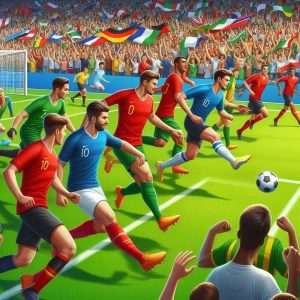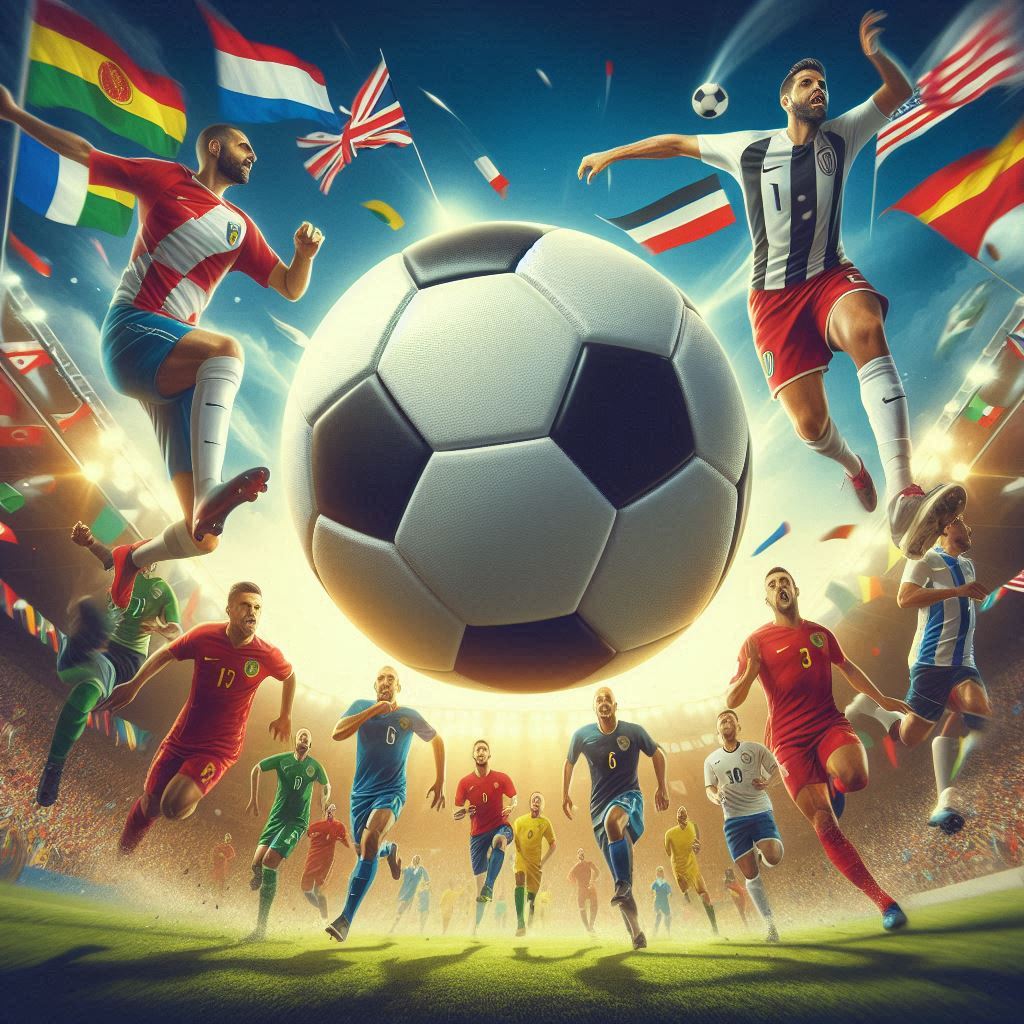Introduction
The year 1965 marked a significant chapter in the history of FIFA and football worldwide. This era was characterized by transformative events, pioneering players, and landmark matches that shaped the beautiful game. This article delves into the key moments, success stories, and exemplary cases that defined football in 1965, providing a comprehensive overview of its impact on the sport.
Key Moments in 1965
The year 1965 was filled with pivotal events that left a lasting impression on the world of football. From remarkable matches to significant administrative decisions, each moment played a role in evolving the sport. Let’s explore some of the key highlights:
1. The Formation of New Competitions
In 1965, FIFA and various football associations introduced new competitions aimed at increasing the sport’s global appeal. One notable addition was the establishment of the Intercontinental Cup, which pitted the winners of the European Cup against the champions of the South American Copa Libertadores.
2. The Evolution of Football Tactics
The mid-1960s saw significant tactical advancements in football. Coaches began to experiment with new formations and strategies, leading to the rise of more dynamic and fluid styles of play. This period witnessed the transition from traditional 2-3-5 formations to more balanced systems like 4-4-2 and 4-3-3, emphasizing teamwork and versatility.
3. Iconic Matches and Rivalries
The 1965 football season was filled with memorable matches and intense rivalries that captivated fans worldwide. One of the most notable encounters was the European Cup final between Inter Milan and Benfica, which showcased tactical brilliance and individual skill.
Success Stories and Exemplary Cases
Numerous players and teams emerged as trailblazers in their respective domains during 1965, rewriting the norms of football and inspiring future generations. From legendary players to iconic clubs, these success stories underscore the transformative power of the sport.
1. Inter Milan’s European Dominance
Inter Milan, under the management of Helenio Herrera, continued their reign in European football by winning the European Cup in 1965. Their triumph over Benfica in the final was a testament to their tactical prowess and disciplined approach, cementing their place in football history.
2. Eusebio’s Brilliance
Eusebio, the Portuguese forward known as the “Black Panther,” was at the peak of his career in 1965. His extraordinary goal-scoring ability and agility on the field made him one of the most feared strikers of his time, earning him numerous accolades and a lasting legacy.
3. The Rise of Celtic FC
Celtic FC, under the guidance of Jock Stein, began their journey towards becoming one of the most successful clubs in European football. Stein’s innovative tactics and emphasis on attacking play laid the foundation for Celtic’s future successes, including their historic European Cup win in 1967.
Challenges and Developments
The mid-1960s were also a time of challenges and significant developments within FIFA and the broader football community. Addressing these issues was crucial for the growth and sustainability of the sport.
1. Addressing Player Welfare
In 1965, the welfare of football players became a growing concern. Issues such as injuries, career longevity, and financial security were brought to the forefront. FIFA and various football associations began to implement measures aimed at improving player conditions, including better medical support and contract regulations.
2. Enhancing Football Infrastructure
The development of football infrastructure was a priority in 1965. Efforts were made to improve stadium facilities, training grounds, and youth academies. These enhancements were essential for nurturing young talent and providing fans with a better matchday experience.
3. Expanding Global Reach
FIFA’s commitment to expanding the global reach of football was evident in 1965. Initiatives were launched to promote the sport in underrepresented regions, particularly in Asia and Africa. These efforts included organizing international friendlies, developing coaching programs, and supporting local football associations.
Significant Matches of 1965
Several matches in 1965 left an indelible mark on football history, showcasing extraordinary talent and unforgettable moments. Here are some of the most significant matches from that year:
1. European Cup Final: Inter Milan vs. Benfica
The European Cup final on May 27, 1965, saw Inter Milan defeat Benfica 1-0 at the San Siro Stadium. Jair’s goal secured Inter’s victory, highlighting their tactical superiority and defensive resilience.
2. FA Cup Final: Liverpool vs. Leeds United
The 1965 FA Cup final held on May 1, 1965, at Wembley Stadium, was a thrilling encounter between Liverpool and Leeds United. Liverpool emerged victorious with a 2-1 win after extra time, securing their first FA Cup title.
3. Copa Libertadores Final: Independiente vs. Peñarol
The Copa Libertadores final on April 15, 1965, featured a fierce battle between Independiente and Peñarol. Independiente triumphed with a 4-1 aggregate score, demonstrating their dominance in South American football.
Notable Players of 1965

1965 witnessed the rise of several legendary players who left an enduring legacy in football. These athletes captivated fans with their skills, determination, and passion for the game.
The Pros and Cons of FIFA Football in 1965
Introduction
The year 1965 was a significant period in the history of FIFA football, marked by numerous advancements and challenges. This era witnessed the evolution of football tactics, the emergence of legendary players, and the expansion of the sport’s global reach. However, it also faced various issues such as player welfare and infrastructure development. This article outlines the pros and cons of FIFA football in 1965, providing a balanced perspective on the developments of that year.
Pros of FIFA Football in 1965
The advancements and positive changes in FIFA football during 1965 brought numerous benefits to the sport. These pros highlight the progress and achievements that defined this period.
1. Tactical Innovations
One of the most notable pros of FIFA football in 1965 was the tactical evolution that took place. Coaches began experimenting with new formations and strategies, moving away from traditional systems to more dynamic and balanced setups. The introduction of formations like 4-4-2 and 4-3-3 emphasized teamwork, versatility, and a more strategic approach to the game.
2. Emergence of Legendary Players
1965 saw the rise of several legendary players who left an indelible mark on football history. Players like Eusebio, Gianni Rivera, and Luis Suárez showcased extraordinary skill and talent, captivating fans worldwide. Their performances not only entertained but also inspired future generations of footballers.
3. Expansion of International Competitions
The introduction and expansion of international competitions were significant pros of FIFA football in 1965. Events like the Intercontinental Cup provided a platform for clubs from different continents to compete, fostering a sense of global camaraderie and rivalry. These competitions also contributed to the growth and popularity of football on an international scale.
4. Improved Football Infrastructure
Efforts to improve football infrastructure were another positive aspect of 1965. Investments in stadiums, training grounds, and youth academies helped create better facilities for players and fans. These improvements were crucial for nurturing young talent and enhancing the overall matchday experience.
5. Increased Focus on Player Welfare
The mid-1960s marked a growing awareness of player welfare. FIFA and various football associations began to address issues related to injuries, career longevity, and financial security. Enhanced medical support, better contract regulations, and efforts to safeguard players’ well-being were significant steps forward.
6. Global Promotion of Football
FIFA’s initiatives to promote football in underrepresented regions, particularly in Asia and Africa, were instrumental in expanding the sport’s global reach. These efforts included organizing international friendlies, developing coaching programs, and supporting local football associations, contributing to the sport’s growth and popularity worldwide.
Cons of FIFA Football in 1965
Despite the numerous advancements, FIFA football in 1965 also faced several challenges and issues. These cons highlight the areas where the sport encountered difficulties and the aspects that required improvement.
1. Limited Technology and Resources
One of the major cons of FIFA football in 1965 was the limited availability of technology and resources. Unlike today’s advanced tools and equipment, the 1960s lacked sophisticated technology for training, injury prevention, and match analysis. This limitation affected the overall development and performance of players and teams.
2. Player Welfare Concerns
Despite efforts to improve player welfare, the mid-1960s still faced significant challenges in this area. Issues such as inadequate medical facilities, insufficient financial security, and lack of career support were prevalent. Players often had to deal with injuries and uncertainties about their future, highlighting the need for more comprehensive welfare measures.
3. Infrastructure Development Lag
While there were efforts to enhance football infrastructure, many regions lagged in development. Several countries lacked modern stadiums, training facilities, and youth academies, affecting the growth of football at the grassroots level. This disparity in infrastructure development hindered the sport’s progress in certain areas.
4. Limited Global Representation
Despite FIFA’s initiatives to promote football globally, the sport’s representation in certain regions was still limited. Asia and Africa, in particular, faced challenges in establishing a strong football presence due to inadequate resources, lack of infrastructure, and limited access to international competitions.
5. Financial Inequities
Financial inequities were a notable con of FIFA football in 1965. Wealthier clubs and associations had more resources to invest in players, facilities, and competitions, creating a disparity between rich and poor clubs. This financial imbalance affected the competitiveness and fairness of the sport, with smaller clubs struggling to keep up.
6. Regulatory Challenges
The regulatory framework governing football in 1965 faced several challenges. Inconsistent rules, lack of standardized regulations, and inadequate enforcement mechanisms led to controversies and disputes. These regulatory issues affected the integrity of competitions and the overall governance of the sport.
Conclusion
The year 1965 was a pivotal period in the history of FIFA football, marked by both significant advancements and notable challenges. The pros, including tactical innovations, the emergence of legendary players, and the expansion of international competitions, highlighted the progress and growth of the sport. However, the cons, such as limited technology, player welfare concerns, and financial inequities, underscored the areas that required improvement. Overall, 1965 played a crucial role in shaping the future of football, laying the foundation for the developments and achievements that followed.
| Player | Nationality | Club | Achievements |
|---|---|---|---|
| Eusebio | Portuguese | Benfica | Top Scorer, European Cup |
| Gianni Rivera | Italian | AC Milan | Italian Footballer of the Year |
| Luis Suárez | Spanish | Inter Milan | European Cup Winner |
FAQs: FIFA Football in 1965
1. What were the major highlights of FIFA football in 1965?

1965 was a year of significant tactical evolution in FIFA football
Teams began adopting formations like 4-4-2 and 4-3-3, emphasizing a more strategic approach to the game. Additionally, this year saw the rise of legendary players such as Eusebio and Gianni Rivera, who made substantial contributions to the sport. The expansion of international competitions, including the Intercontinental Cup, further marked the highlights of this period.
2. How did football tactics evolve in 1965?
In 1965, football tactics witnessed considerable evolution. Coaches experimented with various formations to enhance both offensive and defensive plays. The traditional WM formation gave way to more balanced systems like 4-4-2 and 4-3-3, which allowed for greater versatility and better teamwork. These tactical innovations played a crucial role in shaping modern football strategies.
3. Who were some of the standout players in 1965?
Several players stood out in 1965 for their exceptional performances and contributions to the sport. Eusebio, known for his incredible goal-scoring ability, became a global icon. Gianni Rivera and Luis Suárez also emerged as key figures, showcasing their skill and talent on the international stage. Their performances inspired future generations and left a lasting legacy in football history.
4. What international competitions were prominent in 1965?
The Intercontinental Cup was a notable international competition in 1965. This event pitted club champions from Europe and South America against each other, fostering global camaraderie and rivalry. Additionally, international friendlies and regional tournaments continued to play a significant role in promoting football across different continents.
5. How did infrastructure development impact football in 1965?
Efforts to improve football infrastructure in 1965 had a positive impact on the sport. Investments in stadiums, training facilities, and youth academies provided better environments for players and fans alike. These developments were essential for nurturing young talent and enhancing the overall football experience, although some regions still lagged in infrastructure compared to others.
6. What were the main challenges faced by FIFA football in 1965?
Despite the progress, FIFA football in 1965 faced several challenges. Limited technology and resources affected training and match analysis. Player welfare concerns, including inadequate medical facilities and financial insecurity, were prevalent. Additionally, infrastructure development was uneven, with some regions lacking modern facilities. Financial inequities between clubs also posed a challenge, along with regulatory issues that affected the governance of the sport.
7. How did FIFA address player welfare in 1965?
In 1965, there was a growing awareness of player welfare within FIFA. Efforts were made to address issues such as injuries, career longevity, and financial security. Enhanced medical support, better contract regulations, and initiatives to safeguard players’ well-being were implemented. However, there was still much progress to be made in ensuring comprehensive welfare measures for all players.
8. What was the state of football infrastructure in different regions in 1965?
In 1965, football infrastructure varied significantly across different regions. While some countries invested heavily in modern stadiums, training grounds, and youth academies, others lagged in development. This disparity affected the growth of football at the grassroots level in certain areas. FIFA’s efforts to promote football in underrepresented regions aimed to address these imbalances and foster the sport’s global expansion.
9. How did financial inequities impact FIFA football in 1965?
Financial inequities were a significant issue in FIFA football in 1965. Wealthier clubs had more resources to invest in players, facilities, and competitions, creating a disparity between rich and poor clubs. This financial imbalance affected the competitiveness and fairness of the sport, with smaller clubs struggling to keep up with their wealthier counterparts. Efforts were needed to address these inequities to ensure a more level playing field.
10. What regulatory challenges did FIFA face in 1965?
In 1965, FIFA faced several regulatory challenges. Inconsistent rules, lack of standardized regulations, and inadequate enforcement mechanisms led to controversies and disputes. These issues affected the integrity of competitions and the overall governance of the sport. FIFA needed to establish clearer and more consistent regulations to ensure fair play and maintain the credibility of football.
11. How did FIFA promote football globally in 1965?
FIFA’s initiatives to promote football globally in 1965 were crucial for expanding the sport’s reach. Efforts included organizing international friendlies, developing coaching programs, and supporting local football associations, particularly in underrepresented regions like Asia and Africa. These initiatives aimed to foster the growth and popularity of football worldwide, although challenges remained in establishing strong football presences in certain areas.
12. How did legendary players of 1965 influence future generations?
Legendary players of 1965, such as Eusebio and Gianni Rivera, had a profound influence on future generations of footballers. Their extraordinary skill, talent, and performances inspired young players to pursue football and strive for excellence. These players set new standards for the sport and left a lasting legacy, shaping the development of football for years to come.
13. What were the key tactical innovations introduced in 1965?
Key tactical innovations introduced in 1965 included the adoption of formations like 4-4-2 and 4-3-3. These setups emphasized a more strategic and balanced approach to football, focusing on teamwork, versatility, and adaptability. Coaches moved away from traditional systems, experimenting with new strategies that enhanced both offensive and defensive plays, significantly influencing modern football tactics.
14. How did international competitions in 1965 contribute to the growth of football?
International competitions in 1965, such as the Intercontinental Cup, played a vital role in the growth of football. These events provided a platform for clubs from different continents to compete, fostering global camaraderie and rivalry. They also contributed to the sport’s popularity by showcasing top-level football to a wider audience, furthering the global expansion of the game.
15. What steps were taken to improve football infrastructure in 1965?
In 1965, steps were taken to improve football infrastructure through investments in stadiums, training facilities, and youth academies. These improvements aimed to create better environments for players and fans, nurture young talent, and enhance the overall football experience. However, the development was uneven, with some regions still lacking modern facilities compared to others.
16. How did FIFA address regulatory issues in 1965?
FIFA faced several regulatory issues in 1965, including inconsistent rules and inadequate enforcement mechanisms. To address these challenges, efforts were needed to establish clearer and more standardized regulations. This would ensure fair play, maintain the integrity of competitions, and improve the overall governance of the sport. Effective regulation was crucial for the credibility and development of football.
17. What were the key financial challenges in FIFA football in 1965?
Key financial challenges in FIFA football in 1965 included disparities between wealthy and less affluent clubs. Wealthier clubs had more resources to invest in players, facilities, and competitions, creating a financial imbalance.





Pingback: The History of Football - FIFA Artist